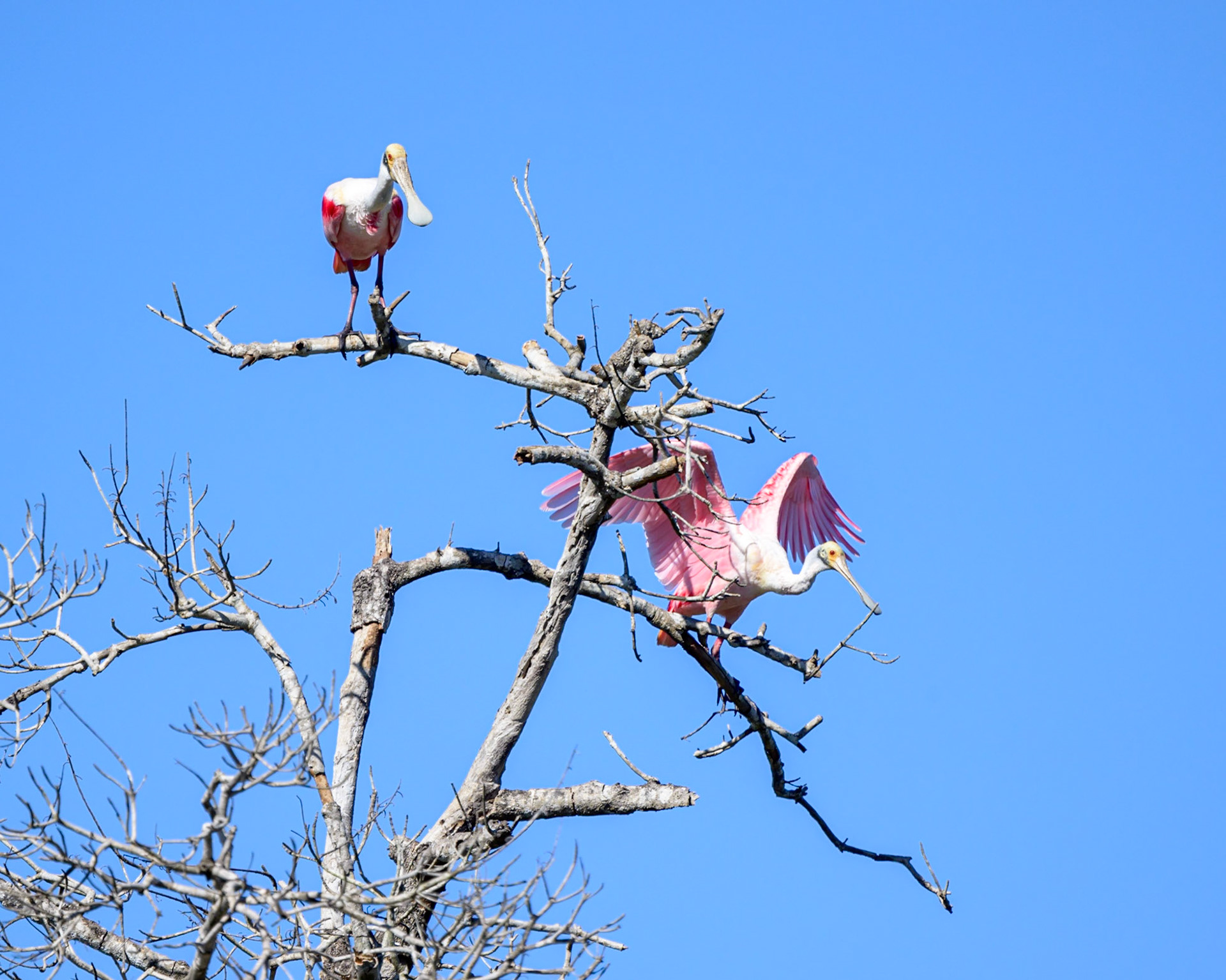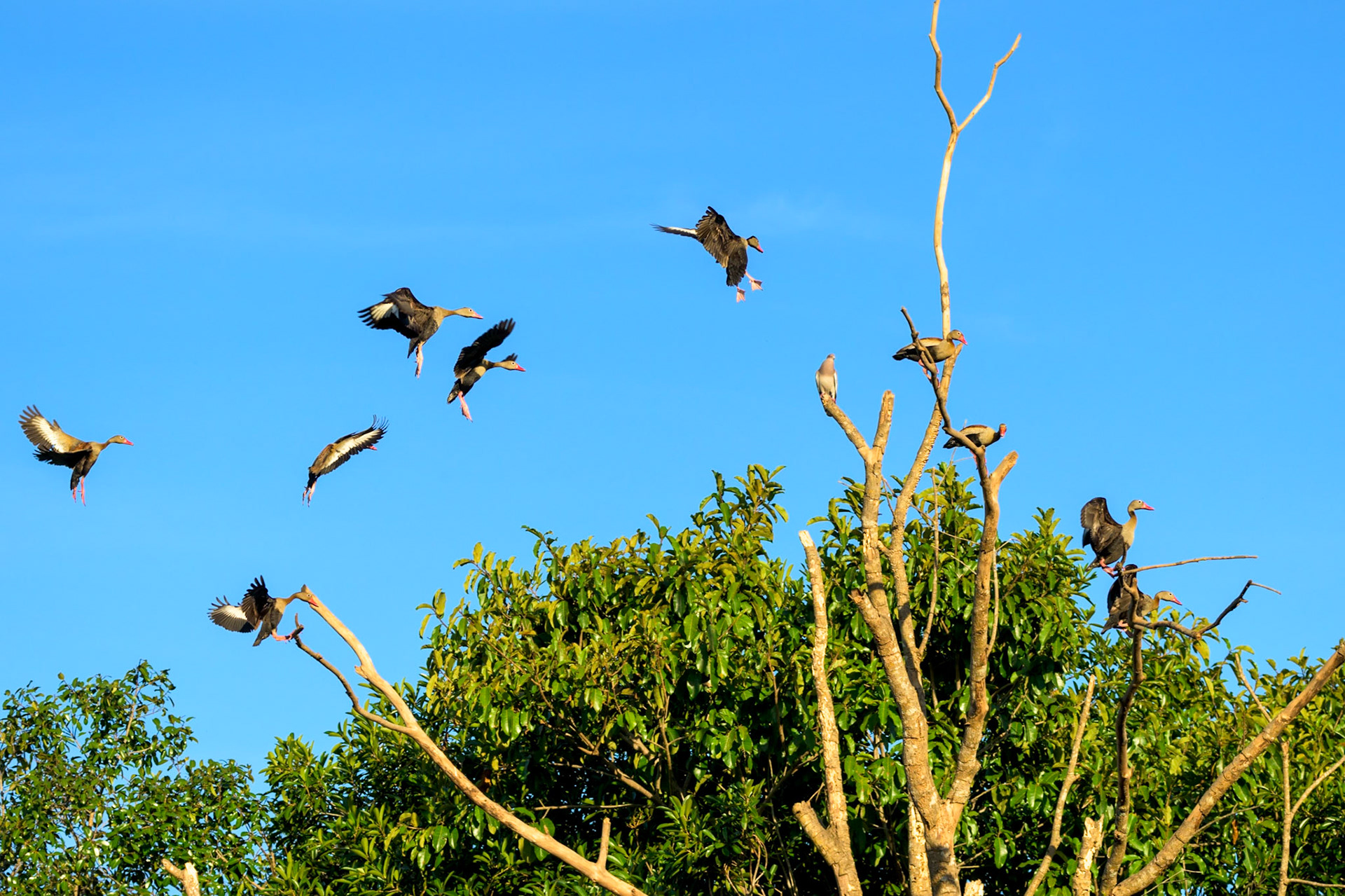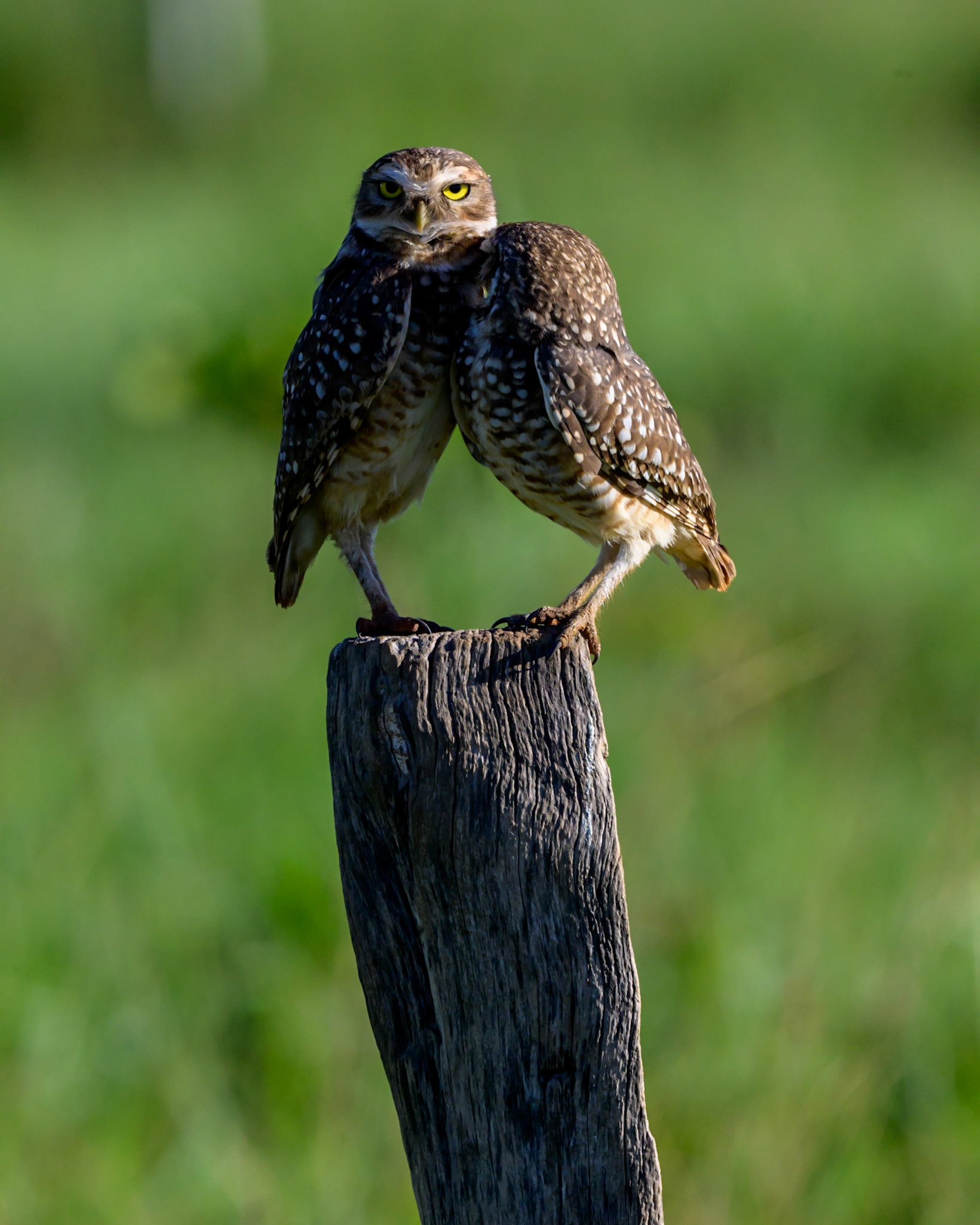
Cattle Tyrants taking advantage of local horses as they graze in the receding waters at the start of the dry season

A Snowy Egret departs after sitting with a Cocoi Heron on a dead tree

A flock of Black-bellied Whistling-Ducks fly overhead

A pair of Roseate Spoonbills sit on the top most branches of a dead tree where they can observe the surrounding wetlands

A Capuchin Monkey peals off the outside husk of a fruit before consuming the nourishment within

This flock of Black Skimmers is on the move from one part of this shallow, but permanent, lake to another. They skim the water to scoop up small fish

A group of White-lipped Peccary forage in the swampy grasses for food

Black-bellied Whistling-Ducks approach a dead tree where they will perch together and possibly roost for the night

A couple of Burrowing Owls sit on a post observing the surrounding fields

A pair of Whistling Herons take a break on a dead tree.

A mother Jaguar chases the last of a group of vultures away from a kill. The local farmers are expected to lose up to 3% of their cattle each year to predators, in reality, it's closer to 1% in the reserve. Fantastic grazing and recovering wildlife habital is a win-win situation for all

A Crab-eating Fox looks and listens intently for a few seconds before continuing on it's way

A pair of Crab eating Foxes look at the camera while foraging for food in the damp and marshy grass.

A Pampas Deer grazes in short grass while a Greater Rhea takes a break in the background

A female Blue-crowned Trogon perches in the bushes.

A Capuchin Monkey runs along a support framework in an organic vegetable garden, trying to determine what might be available for him
















